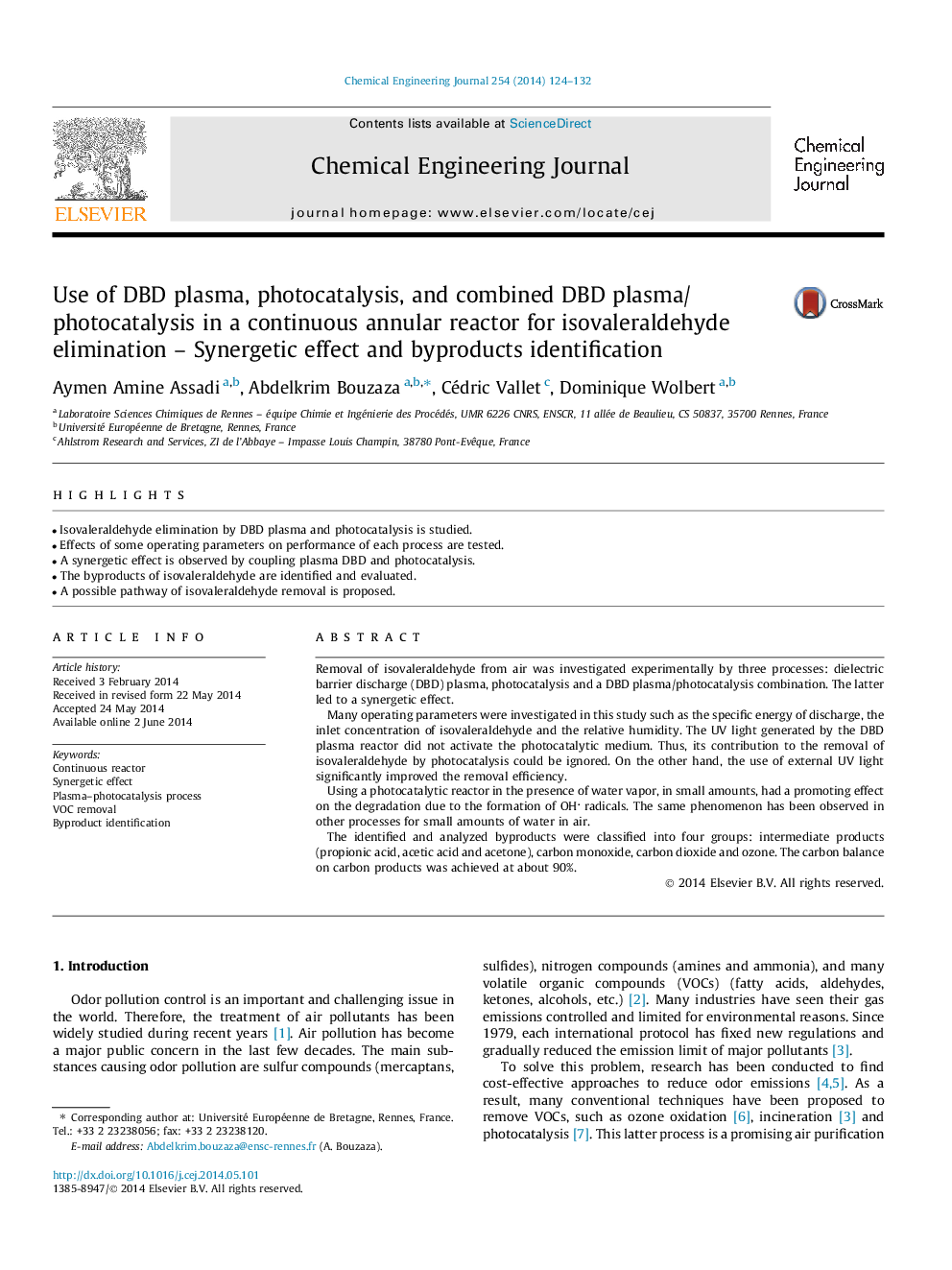| Article ID | Journal | Published Year | Pages | File Type |
|---|---|---|---|---|
| 147245 | Chemical Engineering Journal | 2014 | 9 Pages |
•Isovaleraldehyde elimination by DBD plasma and photocatalysis is studied.•Effects of some operating parameters on performance of each process are tested.•A synergetic effect is observed by coupling plasma DBD and photocatalysis.•The byproducts of isovaleraldehyde are identified and evaluated.•A possible pathway of isovaleraldehyde removal is proposed.
Removal of isovaleraldehyde from air was investigated experimentally by three processes: dielectric barrier discharge (DBD) plasma, photocatalysis and a DBD plasma/photocatalysis combination. The latter led to a synergetic effect.Many operating parameters were investigated in this study such as the specific energy of discharge, the inlet concentration of isovaleraldehyde and the relative humidity. The UV light generated by the DBD plasma reactor did not activate the photocatalytic medium. Thus, its contribution to the removal of isovaleraldehyde by photocatalysis could be ignored. On the other hand, the use of external UV light significantly improved the removal efficiency.Using a photocatalytic reactor in the presence of water vapor, in small amounts, had a promoting effect on the degradation due to the formation of OH radicals. The same phenomenon has been observed in other processes for small amounts of water in air.The identified and analyzed byproducts were classified into four groups: intermediate products (propionic acid, acetic acid and acetone), carbon monoxide, carbon dioxide and ozone. The carbon balance on carbon products was achieved at about 90%.
